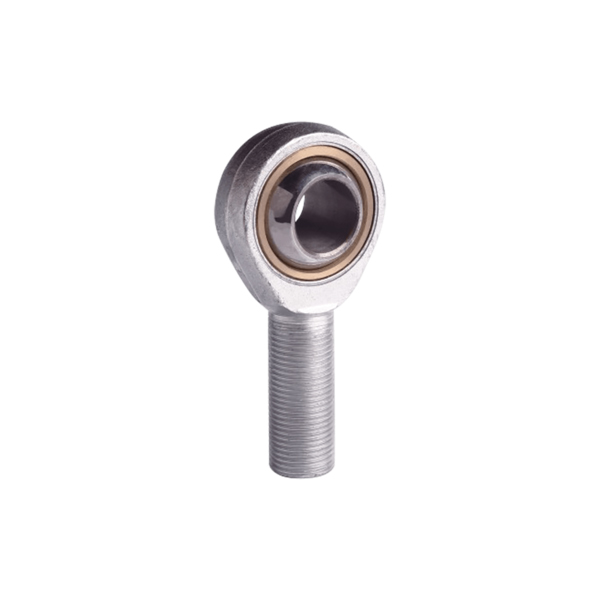What Makes Modern Rod Ends Perform Better and Last Longer?
2025-11-14
Rod ends, also known as heim joints or rose joints, play a crucial role in mechanical linkages where precision, flexibility, and durability are required. They are used extensively in automotive systems, industrial equipment, agricultural machinery, aerospace structures, and automation devices.
What Are Rod Ends and Why Are They Critical in Motion Systems?
Rod ends are mechanical articulating joints designed to connect control rods, linkages, and mechanical arms while allowing angular misalignment and flexible movement in various directions. Their key role is to provide smooth rotational and oscillating motion between connected components under load. Whether used in steering mechanisms, hydraulic cylinders, robotic arms, or industrial linkages, rod ends ensure consistent alignment, stability, and transmission efficiency.
Main Functions of Rod Ends
-
Allow angular and radial movement
-
Compensate for misalignment between components
-
Support dynamic loads in high-stress environments
-
Enable smooth rotation and oscillation
-
Reduce vibration and extend system life
Rod ends are typically constructed with a spherical bearing encased within a housing. This structure allows for controlled movement while retaining high strength and resistance to friction, deformation, and environmental factors.
Product Parameters Overview
The following specifications represent standard industrial-grade rod ends commonly applied across sectors:
| Parameter | Specification Range | Notes |
|---|---|---|
| Inner Bore Diameter (d) | 5 mm – 50 mm | Matches the shaft or bolt size |
| Thread Type | Male / Female | Metric and Inch sizes available |
| Thread Diameter (d₁) | M5 – M48 (or ¼" – 2") | Determines installation compatibility |
| Material Options | Carbon steel, Stainless steel, Alloy steel | Chosen based on load and environment |
| Surface Treatment | Zinc-plated, Nickel-plated, Phosphate, Chrome | Enhances corrosion resistance |
| Bearing Type | PTFE liner, Grease lubricated, Maintenance-free | Depends on application |
| Static Load Capacity | 5 kN – 150 kN | Varies by size and design |
| Dynamic Load Rating | 3 kN – 100 kN | For repetitive motion conditions |
| Operating Temperature | −30°C to +200°C | Depends on bearing liner materials |
| Housing Hardness | HRC 38–45 | Ensures wear resistance |
These parameters help users understand the performance, durability, and installation requirements essential for matching rod ends to mechanical systems.
Why Do Businesses Choose Rod Ends for High-Demand Applications?
Rod ends are selected because they deliver a combination of strength, mobility, and reliability that many alternative linkage solutions cannot provide. They handle multi-directional loads while ensuring precise control and stable system functioning. Below are the key advantages that explain their widespread adoption.
Key Advantages of Rod Ends
1. High Flexibility and Misalignment Compensation
Rod ends offer smooth articulation in multiple directions, allowing machinery to operate efficiently even when components are not perfectly aligned. This is essential in systems where dynamic movement or vibration causes alignment shifts.
2. Strong Load-Bearing Capacity
Industrial rod ends are built to endure considerable static and dynamic forces. Their internal spherical bearing design distributes stress evenly, reducing wear and increasing service life.
3. Compatibility With Harsh Environments
With options such as stainless steel housings and PTFE liner bearings, rod ends resist corrosion, moisture, dust, chemicals, and extreme temperatures. This makes them suitable for automotive suspensions, outdoor farming machinery, and marine use.
4. Reduced Maintenance Requirements
Modern maintenance-free rod ends use self-lubricating PTFE liners that eliminate the need for external grease, saving time and minimizing contamination risks.
5. Easy Installation and Replacement
Both male and female threaded versions allow simple integration into existing systems. Their modular structure makes replacement straightforward without requiring complex disassembly.
6. Improved Vibration Dampening
Rod ends help reduce vibration and noise within mechanical linkages, enhancing stability and the overall service life of machines.
How Do Rod Ends Function and How Should They Be Selected for Optimal Performance?
Understanding how rod ends work allows engineers and buyers to make better choices that align with system demands.
How Rod Ends Work
A rod end contains a spherical ball with a through-hole mounted in a socket-shaped housing. Movement occurs as the ball rotates, tilts, or oscillates within the housing. This movement compensates for misalignment, absorbs vibration, and allows smooth load transfer.
Key performance factors include:
-
Ball hardness and finish – ensures long-term rotation
-
Housing strength – withstands stress and impacts
-
Bearing liner type – determines lubrication needs
-
Thread accuracy – affects connection stability
How to Select the Right Rod Ends
1. Determine Load Type and Capacity Requirements
Choose rod ends with static and dynamic load ratings that exceed expected forces in the application.
2. Evaluate Movement Conditions
-
Oscillating motion: PTFE liner recommended
-
Rotational motion: Grease-lubricated bearings preferred
3. Select Appropriate Materials
-
Stainless steel: for corrosion-prone environments
-
Alloy steel: for heavy-duty industrial loads
-
Carbon steel: for general applications
4. Choose the Correct Thread Type
Metric or inch threads should match existing mechanical parts.
5. Consider Maintenance Capabilities
Maintenance-free models reduce cost and labor for long-term systems.
6. Check Dimensional Fit
Ensure bore diameter, thread length, housing width, and ball width are compatible with the device or machine.
7. Confirm Temperature and Environmental Limits
Select rod ends suited for exposure to heat, moisture, chemicals, or outdoor environments.
What Future Trends Will Shape the Development of Rod Ends?
As industries demand more precision and efficiency, rod ends continue to evolve.
1. Increased Use of Maintenance-Free Bearings
More manufacturers are shifting to PTFE liners to eliminate lubrication and reduce downtime.
2. Higher Corrosion-Resistant Materials
Applications in renewable energy, marine engineering, and chemical plants require stainless steel and specialized coatings.
3. Integration With Smart Monitoring Systems
Future rod ends may incorporate sensors that track:
-
Load levels
-
Temperature changes
-
Wear patterns
-
Vibration intensity
Such monitoring improves predictive maintenance efficiency.
4. Lightweight Engineering Designs
Aerospace and robotics industries prefer aluminum-alloy housings and advanced composites to reduce weight without sacrificing strength.
5. Precision Manufacturing Enhancements
Technologies such as CNC machining and advanced heat treatment continue to increase accuracy, lifespan, and performance consistency.
Common FAQs About Rod Ends
Q1: What causes premature wear in rod ends?
A1: Premature wear usually results from excessive load, incorrect bearing lubrication, misalignment beyond the allowable angle, or use of unsuitable materials in harsh environments. Selecting a rod end with appropriate load ratings, using maintenance-free options where necessary, and ensuring proper installation can significantly extend service life.
Q2: How should rod ends be maintained to ensure optimal performance?
A2: Maintenance depends on the bearing type. Grease-lubricated rod ends require periodic cleaning and lubrication to prevent friction and contamination. Maintenance-free PTFE-lined rod ends need no lubrication but should be inspected regularly for signs of wear, corrosion, or loosening connections. Temperature and environmental exposure should also be monitored to prevent material degradation.
Conclusion
Rod ends continue to be indispensable components in mechanical linkages across automotive, industrial, agricultural, robotics, and aerospace sectors. Their ability to handle multi-directional loads, compensate for misalignment, and provide long-lasting durability makes them essential for modern engineering systems. As manufacturing processes improve and industries demand more reliability and precision, rod ends will evolve with better materials, enhanced load capabilities, smart monitoring features, and more efficient designs.
In the global marketplace, brands like Dongzhou continue to deliver high-quality rod ends built to meet these evolving standards. For specific inquiries, application guidance, or customized solutions, contact us to learn more and receive professional support tailored to project requirements.



